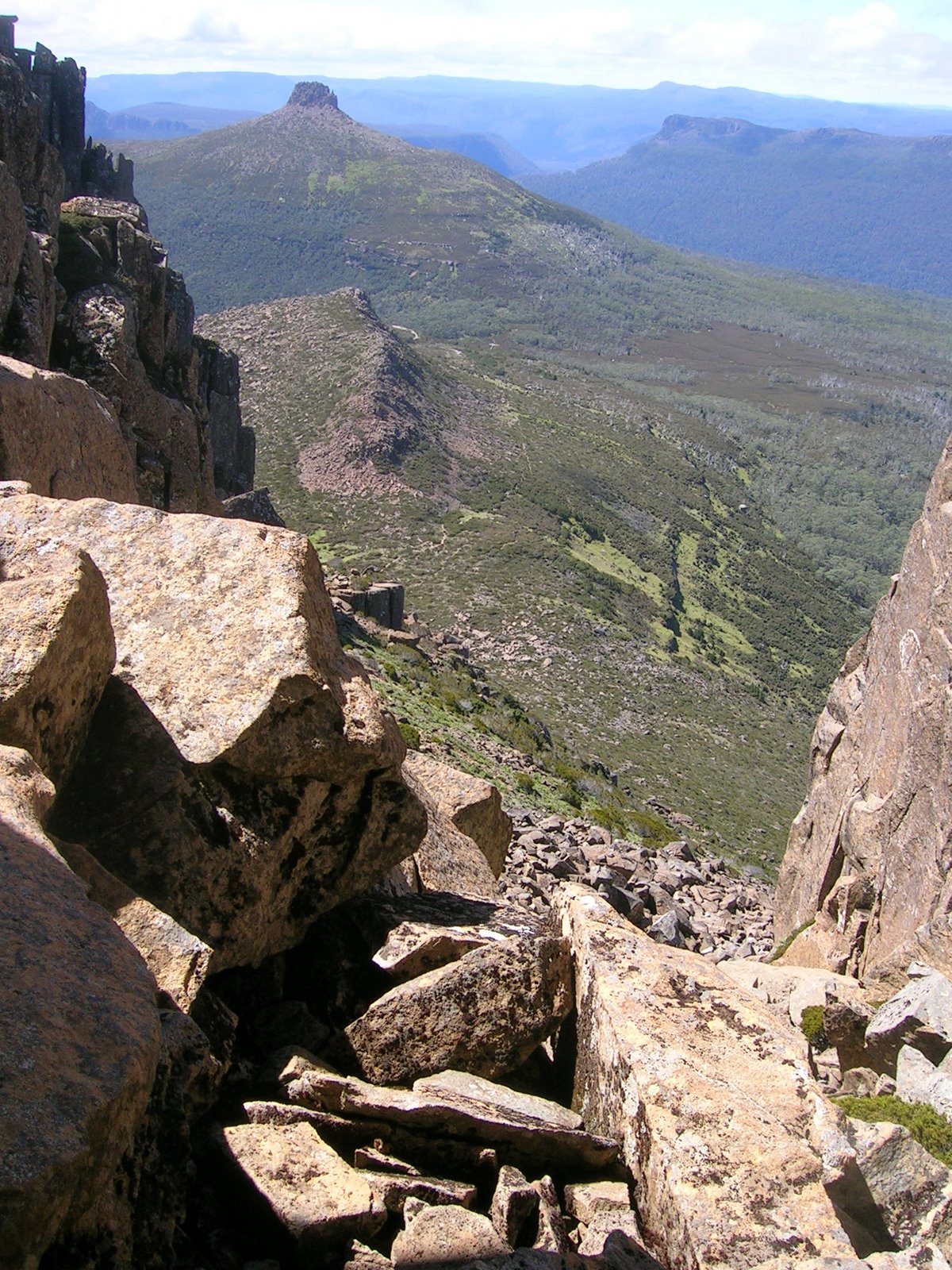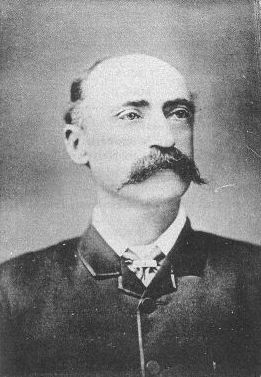|
Ngarutjaranya
Ngarutjaranya, also known as Mount Woodroffe (officially Ngarutjaranya/Mount Woodroffe), is a mountain in the Australian state of South Australia, located in the Anangu Pitjantjatjara Yankunytjatjara lands in the state's northwest. It is South Australia's highest peak, at . Cultural significance The name of the mountain comes from the Pitjantjatjara language. In Pitjantjatjara mythology, the mountain embodies the mythological creature Ngintaka. Geography Ngarutjaranya is located in the far northwest of South Australia, in the Musgrave Ranges. The mountain range rises some 700–800 metres from the surrounding plains and comprises massifs of granite and gneiss. History William Ernest Giles was the first European man to pass through the area and camped to the south of Woodroffe on September 7, 1873. William Christie Gosse had previously named it Mt Woodroffe on July 20 that same year. Woodroffe was named after George Woodroffe Goyder, Surveyor-General of South Austral ... [...More Info...] [...Related Items...] OR: [Wikipedia] [Google] [Baidu] |
List Of Mountains In Australia
This is a list of mountains in Australia. Highest points by state and territory List of mountains in Australia by topographic prominence This is a list of the top 50 mountains in Australia ranked by topographic prominence. Most of these peaks are the highest point in their areas. Australian Capital Territory The following is a list of mountains and prominent hills in the Australian Capital Territory in order, from the highest peak to the lowest peak, for those mountains and hills with an elevation above : New South Wales Queensland South Australia Tasmania Victoria Western Australia * Carnarvon Range * Mount Augustus (1105m) * Mount Beadell * Darling Range ** Mount Dale ** Mount Cooke * Hamersley Range ** Mount Meharry (at 1,249 metres above sea level, the highest peak in Western Australia) ** Mount Bruce (1,221 m; the second highest peak in WA) ** Mount Nameless/Jarndunmunha 1,115 m * Wunaamin Miliwundi Ranges, formerly King Leopold Ranges * ... [...More Info...] [...Related Items...] OR: [Wikipedia] [Google] [Baidu] |
Anangu Pitjantjatjara Yankunytjatjara
Aṉangu Pitjantjatjara Yankunytjatjara, also known as APY, APY Lands or ''the Lands'', is a large, sparsely-populated local government area (LGA) for Aboriginal people, located in the remote north west of South Australia. Some of the aṉangu (people) of the Western Desert cultural bloc, in particular Pitjantjatjara, Yankunytjatjara and Ngaanyatjarra peoples, inhabit the Lands. Governance of the area is determined by the '' Anangu Pitjantjatjara Yankunytjatjara Land Rights Act 1981'' (or APYLRA), whereby an elected executive board reports to the Premier of South Australia. The APY administration centre of is located at Umuwa. A large portion of the APY Lands was formerly the North-West Aboriginal Reserve. History Early history The Pitjantjatjara and Yankunytjatjara people (''aṉangu'') had lived in this area for many thousands of years. Even after the British began to colonise the Australian continent from 1788 onwards, and the colonisation of South Australia from 1836, t ... [...More Info...] [...Related Items...] OR: [Wikipedia] [Google] [Baidu] |
William Gosse (explorer)
William Christie Gosse (11 December 1842–12 August 1881), was an Australian explorer, who was born in Hoddesdon,"Gosse, William Christie (1842–1881)". ''Australian Dictionary of Biography'', Online Edition. Australian National University. 2006. Retrieved 13 March 2014. Hertfordshire, England and immigrated to Australia with his father Dr. William Gosse in 1850. He was educated at J. L. Young's Adelaide Educational Institution and in 1859 he entered the Government service of South Australia. He held various positions in the survey department, including Deputy Surveyor-General. He died of a heart attack on 12 August 1881, aged 38, after a long illness. Although Gosse's exploration was not groundbreaking, he filled in many details in the central map. He named the Musgrave Ranges and was able correctly to lay down the position of some of the discoveries of Ernest Giles. On 19 July 1873 he reached an inselberg and gave it the name Ayers Rock. He was the first European man to c ... [...More Info...] [...Related Items...] OR: [Wikipedia] [Google] [Baidu] |
New South Wales
) , nickname = , image_map = New South Wales in Australia.svg , map_caption = Location of New South Wales in AustraliaCoordinates: , subdivision_type = Country , subdivision_name = Australia , established_title = Before federation , established_date = Colony of New South Wales , established_title2 = Establishment , established_date2 = 26 January 1788 , established_title3 = Responsible government , established_date3 = 6 June 1856 , established_title4 = Federation , established_date4 = 1 January 1901 , named_for = Wales , demonym = , capital = Sydney , largest_city = capital , coordinates = , admin_center = 128 local government areas , admin_center_type = Administration , leader_title1 = Monarch , leader_name1 = Charles III , leader_title2 = Governor , leader_name2 = Margaret Beazley , leader_title3 = Premier , leader_name3 = Dominic Perrottet (Liberal) , national_representation = Parliament of Australia , national_representation_type1 = Senat ... [...More Info...] [...Related Items...] OR: [Wikipedia] [Google] [Baidu] |
Siding Spring Observatory
Siding Spring Observatory near Coonabarabran, New South Wales, Australia, part of the Research School of Astronomy & Astrophysics (RSAA) at the Australian National University (ANU), incorporates the Anglo-Australian Telescope along with a collection of other telescopes owned by the Australian National University, the University of New South Wales, and other institutions. The observatory is situated above sea level in the Warrumbungle National Park on Mount Woorat, also known as Siding Spring Mountain. Siding Spring Observatory is owned by the Australian National University (ANU) and is part of the Mount Stromlo and Siding Spring Observatories research school. More than 100 million worth of research equipment is located at the observatory. There are over 60 telescopes on site, though not all are operational. History The original Mount Stromlo Observatory was set up by the Commonwealth Government in 1924. After duty supplying optical components to the military in World W ... [...More Info...] [...Related Items...] OR: [Wikipedia] [Google] [Baidu] |
Anglo-Australian Telescope
The Anglo-Australian Telescope (AAT) is a 3.9-metre equatorially mounted telescope operated by the Australian Astronomical Observatory and situated at the Siding Spring Observatory, Australia, at an altitude of a little over 1,100 m. In 2009, the telescope was ranked as having the fifth-highest-impact of the world's optical telescopes. In 2001–2003, it was considered the most scientifically productive 4-metre-class optical telescope in the world based on scientific publications using data from the telescope. The telescope was commissioned in 1974 with a view to allowing high-quality observations of the sky from the Southern Hemisphere. At the time, most major telescopes were located in the Northern Hemisphere, leaving the southern skies poorly observed. It was the largest telescope in the Southern Hemisphere from 1974 to 1976, then a close second to the Víctor M. Blanco Telescope from 1976 until 1998, when the first ESO Very Large Telescope (VLT) was opened. The AAT was ... [...More Info...] [...Related Items...] OR: [Wikipedia] [Google] [Baidu] |
George Woodroffe Goyder
George Woodroffe Goyder (24 June 1826 – 2 November 1898) was a surveyor in the Colony of South Australia during the latter half of the nineteenth century. He rose rapidly in the civil service, becoming Assistant Surveyor-General by 1856 and the Surveyor General of South Australia in 1861. He is remembered today for Goyder's Line of rainfall, a line used in South Australia to demarcate land climatically suitable for arable farming from that suitable only for light grazing, and for the siting, planning and initial development of Darwin, the Northern Territory capital and principal population centre. However, Goyder was an avid researcher into the lands of South Australia (including the present-day Northern Territory) and made recommendations to a great number of settlers in the newly developing colony, especially to those exploiting the newly discovered mineral resources of the state. Career Early life Goyder was born in Liverpool, England to Sarah and David George ... [...More Info...] [...Related Items...] OR: [Wikipedia] [Google] [Baidu] |
Ernest Giles
William Ernest Powell Giles (20 July 1835 – 13 November 1897), best known as Ernest Giles, was an Australian explorer who led five major expeditions to parts of South Australia and Western Australia. Early life Ernest Giles was born in Bristol, England, the eldest son of William Giles ( – 28 May 1860), a merchant, and Jane Elizabeth Giles, ''née'' Powell ( – 15 March 1879). Their family had been in comfortable circumstances but fell on hard times and emigrated to Australia. William Giles was living in North Adelaide by 1850 and Melbourne by 1853. William was later employed by Customs in Victoria, and his wife founded a successful school for girls in that colony. Giles was educated at Christ's Hospital school, Newgate, London. In 1850, at the age of 15, he emigrated to Australia, joining his parents in Adelaide. In 1852 Giles went to the Victorian goldfields, then became a clerk at the Post Office in Melbourne, and later at the County Court. Soon tiring of town life Gi ... [...More Info...] [...Related Items...] OR: [Wikipedia] [Google] [Baidu] |
South Australia
South Australia (commonly abbreviated as SA) is a state in the southern central part of Australia. It covers some of the most arid parts of the country. With a total land area of , it is the fourth-largest of Australia's states and territories by area, and second smallest state by population. It has a total of 1.8 million people. Its population is the second most highly centralised in Australia, after Western Australia, with more than 77 percent of South Australians living in the capital Adelaide, or its environs. Other population centres in the state are relatively small; Mount Gambier, the second-largest centre, has a population of 33,233. South Australia shares borders with all of the other mainland states, as well as the Northern Territory; it is bordered to the west by Western Australia, to the north by the Northern Territory, to the north-east by Queensland, to the east by New South Wales, to the south-east by Victoria, and to the south by the Great Australian Bight.M ... [...More Info...] [...Related Items...] OR: [Wikipedia] [Google] [Baidu] |
Gneiss
Gneiss ( ) is a common and widely distributed type of metamorphic rock. It is formed by high-temperature and high-pressure metamorphic processes acting on formations composed of igneous or sedimentary rocks. Gneiss forms at higher temperatures and pressures than schist. Gneiss nearly always shows a banded texture characterized by alternating darker and lighter colored bands and without a distinct cleavage. Gneisses are common in the ancient crust of continental shields. Some of the oldest rocks on Earth are gneisses, such as the Acasta Gneiss. Description Orthogneiss from the Czech Republic In traditional English and North American usage, a gneiss is a coarse-grained metamorphic rock showing compositional banding (gneissic banding) but poorly developed schistosity and indistinct cleavage. In other words, it is a metamorphic rock composed of mineral grains easily seen with the unaided eye, which form obvious compositional layers, but which has only a weak tendency to fracture ... [...More Info...] [...Related Items...] OR: [Wikipedia] [Google] [Baidu] |
Granite
Granite () is a coarse-grained (phaneritic) intrusive igneous rock composed mostly of quartz, alkali feldspar, and plagioclase. It forms from magma with a high content of silica and alkali metal oxides that slowly cools and solidifies underground. It is common in the continental crust of Earth, where it is found in igneous intrusions. These range in size from dikes only a few centimeters across to batholiths exposed over hundreds of square kilometers. Granite is typical of a larger family of ''granitic rocks'', or ''granitoids'', that are composed mostly of coarse-grained quartz and feldspars in varying proportions. These rocks are classified by the relative percentages of quartz, alkali feldspar, and plagioclase (the QAPF classification), with true granite representing granitic rocks rich in quartz and alkali feldspar. Most granitic rocks also contain mica or amphibole minerals, though a few (known as leucogranites) contain almost no dark minerals. Granite is nearly alway ... [...More Info...] [...Related Items...] OR: [Wikipedia] [Google] [Baidu] |






